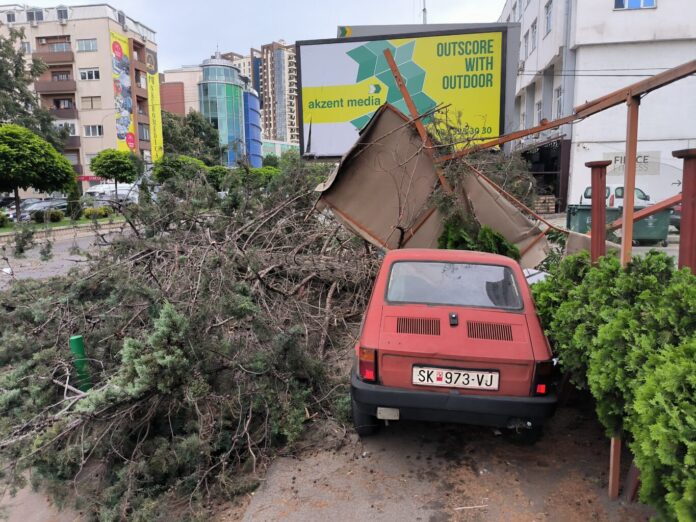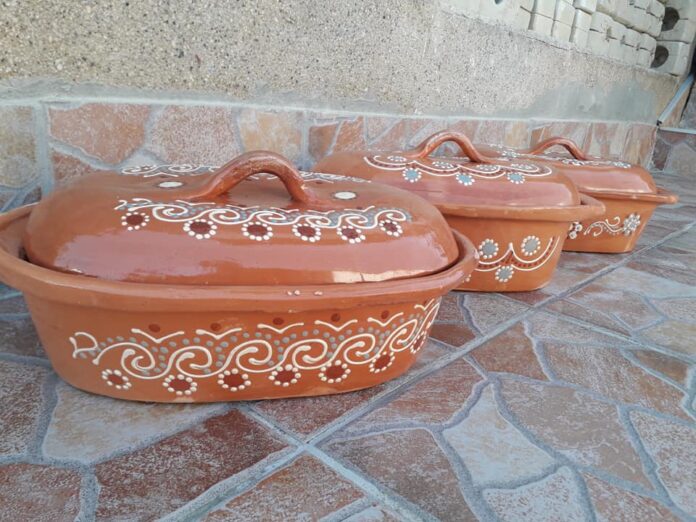The greatest miracle of the Christian world

Hours before the celebration of the resurrection of Jesus Christ, his grave appears on his grave
The descent of the Holy Fire (ie the Light of Christ’s Resurrection) of the sowing of Christ in the temple of the Resurrection in Jerusalem, which appears every Holy Saturday – the day before Easter, is the only miraculous event in the history of mankind, which is held every year.
In the book of author Haralambos K. Scarlakidis, titled « The Miracle of the Light of the Resurrection of the Tomb of Jesus », has 70 historical explanations – topics that, covering a period of thirteen centuries (4–16th centuries), describe historical reports of the glorious event. Seventy authors from 17 countries, mostly from Europe, describe the greatest miracle of Christian world: the Holy Fire that appears every sacred Saturday at the tomb of Jesus, hours before the celebration of His Resurrection.
The emergence of the graceful fire in the grave of the Lord in that temple is one of the most striking and most famous moments of the celebration of the greatest miracle in history – the resurrection of the dead of Jesus Christ.
In one of the topics, titled « The Grace – Miracle of Christ’s Tomb (Introduction), » states: « In this text we will list some 45 different testimonies, mostly unknown so far, covering eight centuries, ie from the 9th to the 16th centuries, taking into account numerous manuscripts.
In the wonderful column of the Brotherhood of the Bigorski Osor, published a year ago on the Veles Bigorski Monastery website-created 1,005 years ago, among other things, this event happens every year on Great Saturday, in the eyes of Christ’s day, and by Christ. In the temple of the Resurrection in Jerusalem.
In the third part (theme) of the book by Scarlakidis, titled « The Director of Design and the Miracle of the Graceful Fire », the following words are described: « The fire descends like lightning, it can receive various shapes. It often looks like the entire gave is wrapped in a flame, or how it comes from light.
About 25 worshipers present at the service in 1996 testified that those fireballs passed literally just above their heads, but did not cause them any burns. Many of them were instinctively paid to avoid the balls. However, some of the attendees neither notice nor experience anything, and those who have experienced the miracle – there are differences in testimonies. It depends not only on the strength of their faith but is also the result of the action of God’s providence that is separately deserved to experience something different from others … «
In the same column of the fraternity of the Bigorski Osor adds: « There are numerous historical testimonies, not only of Orthodox, but also to Innoslavian, Muslims, Foreign Diplomats, Travelers, Historians and Researchers – who were present and experienced the miracle of God, and in addition to the grace, Lower temperature. «
Nowadays, the service begins the morning on the Great Saturday, when all the candles in the temple are extinguished, and Christ’s tomb is sealed with beeswax. Exactly at noon the temple enters the Jerusalem Patriarch and begins the traditional holy liturgy, which trimmes the Holy Sepulcher three times.
After the liturgy, the grave is printed and the ski -heating (the guardian of the sacred objects) inserts the faded « non -fat candle », which will be burned by the Holy Fire. Then the patriarch takes off his hierarchical attitude in a sign of humility and fears of Jesus Christ and remains only in white chiton.
Taking four bundles of 33 candles (the number of years as Christ lived on earth), the patriarch enters the grave alone. It also includes an Armenian representative, who has the right to be in the porch, from where he oversees the patriarch, who utters a special prayer addressed to Jesus Christ, asking him to send the graceful fire – as a gift, for the blessing and sanctification of the people.
Almost at the same moment the holy fire appears and begins to spread to the temple, while at the same time the unusual candle inside the tomb lights. The service ends with the release of the patriarch and the transfer of the fire to the faithful.
The most beautiful aspect of the Holy grateful fire is the way this fire is, and in this place touches and transforms the hearts of people. This fire is not only a physical phenomenon – it is also an expression of God’s grace that enters the depths of the soul. At the moment when the flames began to tremble mystically and to give up on one another, the joy of the resurrection feels, the real presence of the Holy Spirit feels.
To the great joy of our Orthodox Christians, the graceful fire of 2009 arrives – besides other Orthodox local churches and countries – and in Macedonia. Many tens of thousands of believers testify to his grace and appearance. At the initiative and commitment of the priestly Bigorski Osor, the graceful Jerusalem fire for the first time (at St. Passover – Easter) was brought from Greece to Macedonia in 2009. Then, the fire was first brought to the ancient sanctuary – the temple of God « St. John the Baptist », better known as the Bigorski Monastery.
In the aforementioned column, it states: « Namely, he reminds us that our path to personal resurrection and salvation is not only a way of faith, but also a path of light and love – love for God and to the neighbor, which illuminates our soul and leads us to the true flash of us. Be light for others, bring comfort and warmth where there is sadness and darkness. «
The Holy Fire probably first appeared on April 5 in 33 years from AD. – Exactly at the time of the resurrection of the Godman, from midnight to General Saturday to several hours before the rise of the Resurrection week. The unusual candidate of the Holy Sepulcher was first set on fire in 326, when the tomb of Christ was discovered – and has since never been extinguished for 17 centuries (except for the morning on Great Saturday).
Similarities in Easter marking in Orthodox and differences in terms of Catholic Christians
Many Orthodox churches mark the resurrection with midnight
Easter, the most joyful Christian holiday, in Orthodox countries is still a state and family holiday. This holiday has many customs and habits that the people who celebrate it is practiced, so the customs of Easter are a very inspiring theme that can be learned much about peoples around the world.
The most widespread is the story of Easter eggs, which is one of the main associations of this holiday. Eggs in most countries are on Good Friday – the saddest day for Christians, because Jesus Christ was crucified on that day on the Cross of Calvary. Although the tradition requires the eggs to be drawn in red (the color of Jesus’ blood), this universal custom is applied in different ways.
Different Easter customs behind them have interesting meanings, which usually come from even more interesting stories and beliefs. Catholics and Orthodox – who celebrate Easter this year on the same day – share some customs, while others are completely different and vary from state to state.
While many Christian churches hold services after the sun rises at Easter, many Orthodox churches celebrate the resurrection with midnight service, during which candles are burned and « Christ anesty » is sung – which means « Christ is risen ».
In the days of Holy Week (starts Monday and lasts until Easter, and often two days later), many believers devote themselves to God through the presence of morning liturgies, evening services and vigils. They are first confessed and then partake of Easter, ending the 48-day post.
The most important services begin on Good Thursday and last until the second day after Easter. The most significant prayers are on Sunday, early in the morning, at midnight and morning liturgy.
In addition to the spiritual dimension, Easter is also a time for family gatherings, a common lunch and, of course, traditional breaking of the eggs – a custom that is particularly favorite of children.
Orthodox Christians who respect Easter fasting do not consume food such as meat, eggs, oily cheeses, milk, margarine, etc. The way of fasting determines the spiritual father for each believer individually.
In Serbian Orthodox families, the traditional Easter table begins with a dimenal meat and cheese, boiled eggs and black wine. Homemade soup and roasted meat – most commonly lamb, but also a plate. On Good Friday, Easter eggs are boiled and the first egg is red – called « guardian », kept in the house until the next Easter, as protection against diseases and accidents.
Breaking eggs is an inevitable custom in Serbia. It begins after the morning liturgy, when believers carry a vapped egg.
In Greek Orthodox, feasts can begin immediately after midnight, or delayed for Sunday’s dinner. Meals most commonly contain hard -boiled red eggs (symbol of Christ’s blood), lamb on the spit (as a symbol of Christ and Passover), as well as Jureki – traditional sweet bread, similar to the Italian variant, which is usually served with a red egg.
In Greece a favorite custom is the competition whose egg is strongest. According to the rule, the egg must be held with three fingers. The winner gets the broken egg from the opponent and has the right to eat it.
In Russia, Orthodox Christians interrupt fasting with the traditional Easter cake – « Kulich ».
In Montenegro, customs are similar to those in other Orthodox countries. Guests who come to the house choose an egg and carry it with them. When they go to congratulate Easter with a relative, neighbor or friend, they give one of their eggs.
In Albania – where both Muslim and Christian holidays are celebrated – Orthodox Easter is celebrated throughout the country.
Catholics, after the church service, follow the search for hidden eggs in the gardens – a custom that is particularly happy with children. Chocolate eggs are also hidden, which are a reward for the one to find them. This custom, known as « egg hunting », is popular both in Europe and the United States.
In France, after the search, there is a large family lunch with a roast lamb, and Easter Day is celebrated, when families usually go on a picnic in the southwest of the country and prepare a giant omelet.
In Italy, the famous cuisine is at the center of Easter celebrations. The table differs from some special dishes, like the traditional Columbus cake – in the form of a pigeon, symbolizing the coming of good news. Eat Easter Salt Pie – Pasqualina, stuffed with spinach and eggs.
Zivko Zdravkoski








